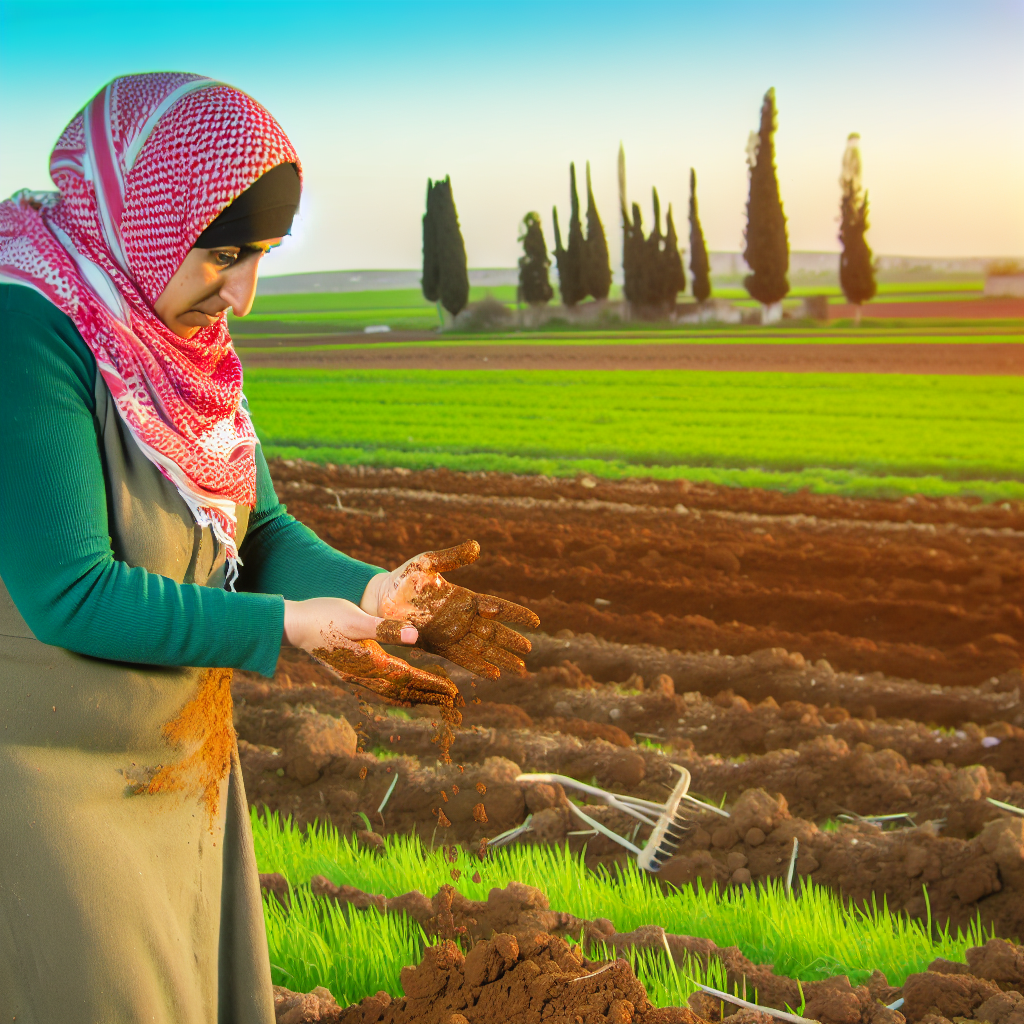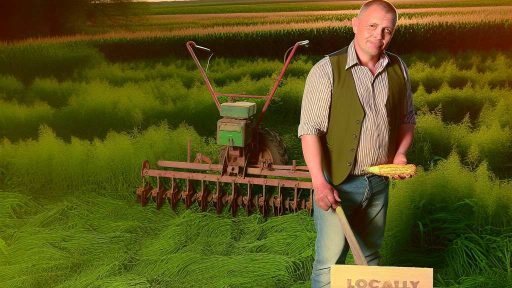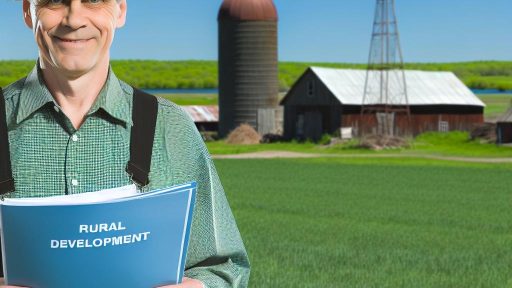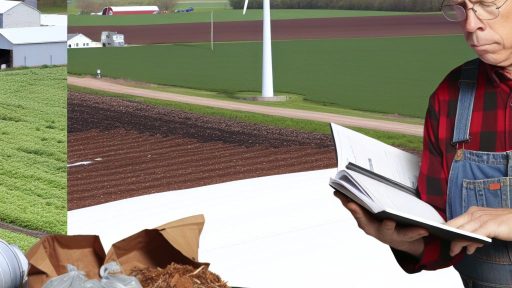Introduction to Soil Health
Importance of Soil Health
Sole health serves as the foundation for sustainable agriculture.
Healthy soil supports plant growth and yields healthy crops.
Additionally, it aids in water filtration and carbon sequestration.
Sole health impacts food security and ecosystem stability.
Furthermore, it enhances biodiversity by fostering various organisms.
Overview of Soil Composition
Sole consists of minerals, organic matter, water, and air.
Each component plays a vital role in soil functionality.
Minerals provide essential nutrients for plant growth.
Organic matter contributes to soil structure and fertility.
Moisture levels affect microbial activity and plant health.
Air pockets in soil facilitate root respiration and nutrient uptake.
Indicators of Soil Health
Several indicators assess soil health effectively.
- Sole structure determines drainage and root penetration.
- Sole pH affects nutrient availability and microbial activity.
- Organic matter content indicates fertility and carbon levels.
- Biological activity reveals ecosystem health and nutrient cycling.
Threats to Soil Health
Various factors threaten soil health globally.
Sole erosion diminishes topsoil and essential nutrients.
Over-farming leads to nutrient depletion and biodiversity loss.
Transform Your Agribusiness
Unlock your farm's potential with expert advice tailored to your needs. Get actionable steps that drive real results.
Get StartedPollution introduces harmful chemicals and toxins into the soil.
Climate change alters moisture and temperature, impacting soil systems.
Overview of Conservation Programs
Definition and Objectives
Conservation programs aim to protect natural resources on farms.
They focus specifically on soil health, water quality, and biodiversity.
These programs seek to promote sustainable agricultural practices.
Farmers participate voluntarily to enhance environmental stewardship.
Additionally, they receive technical and financial support.
Overall, the objective is to improve the resilience of farming systems.
Key Components of Conservation Programs
These programs often include various practices and strategies.
Cover cropping is a popular technique in conservation agriculture.
This method helps prevent soil erosion and improves fertility.
No-till farming is another effective practice.
This approach minimizes soil disturbance and retains moisture.
Agroforestry integrates trees into crop and livestock systems.
This promotes biodiversity and enhances carbon sequestration.
Moreover, rotational grazing improves soil health and grassland productivity.
Benefits of Participation
Farmers gain multiple advantages from enrolling in conservation programs.
These include improved soil quality and increased yields.
Additionally, they can enhance water filtration and reduce runoff.
Participating farmers often access funding opportunities.
This financial assistance can offset implementation costs.
Furthermore, they contribute positively to local ecosystems.
Implementation and Support
Various organizations help implement conservation programs on farms.
Local agricultural agencies offer guidance and resources.
Showcase Your Farming Business
Publish your professional farming services profile on our blog for a one-time fee of $200 and reach a dedicated audience of farmers and agribusiness owners.
Publish Your ProfileNonprofit organizations often provide technical assistance.
Collaboration among farmers fosters knowledge sharing and innovation.
This network enhances the success of conservation practices.
As a result, farmers become more engaged and informed.
Types of Conservation Practices Beneficial to Soil Health
Cover Cropping
Cover cropping improves soil structure and fertility.
It protects the soil from erosion and compaction.
These crops also enhance soil organic matter.
Moreover, cover crops suppress weeds effectively.
Farmers like Emily Rodriguez utilize clover and rye as cover crops.
No-Till Farming
No-till farming maintains soil integrity and moisture.
This practice reduces disturbance to soil microorganisms.
As a result, it enhances nutrient cycling in the soil.
Farmers such as Michael Chen have adopted no-till methods.
This approach promotes better soil health over time.
Crop Rotation
Crop rotation diversifies plant species in fields.
This technique disrupts pest and disease cycles.
Additionally, it improves soil nutrient levels.
Farmers like Sarah Johnson rotate legumes and grains.
Such practices result in healthier and more resilient soils.
Agroforestry
Agroforestry integrates trees with crops and livestock.
This combination improves biodiversity and ecosystem health.
Furthermore, it reduces soil erosion and enhances moisture retention.
Farmers such as Daniel Myers practice agroforestry on their lands.
Overall, it creates a more balanced agricultural environment.
Soil Conservation Structures
Soil conservation structures help prevent erosion.
Terracing and contour farming are effective techniques.
These structures slow down water runoff significantly.
This ensures better water infiltration and soil retention.
Many farmers, including Laura Smith, use these practices to protect their land.
Learn More: Maximizing Farm Profits Through Understanding Trade Agreements
Role of Cover Crops in Enhancing Soil Quality
Introduction to Cover Crops
Cover crops are vital for sustainable farming practices.
They provide numerous benefits to soil quality and agricultural productivity.
Farmers grow these crops during the off-season.
This helps to protect and enrich the soil.
Improving Soil Structure
Cover crops play a significant role in improving soil structure.
They help prevent soil erosion by stabilizing the topsoil.
Additionally, their roots create channels in the soil.
This enhances water infiltration and reduces compaction.
Enhancing Nutrient Levels
These crops improve soil fertility by fixing nitrogen.
Leguminous cover crops, such as clover, are particularly effective.
Showcase Your Farming Business
Publish your professional farming services profile on our blog for a one-time fee of $200 and reach a dedicated audience of farmers and agribusiness owners.
Publish Your ProfileThey convert atmospheric nitrogen into a usable form for plants.
Furthermore, cover crops release nutrients back into the soil as they decompose.
Weed Suppression
Cover crops can effectively suppress weed growth.
Their dense foliage shades the soil, limiting sunlight for weeds.
Additionally, cover crops compete for resources, minimizing weed establishment.
This reduces the need for herbicides, promoting ecological health.
Improving Soil Microbial Activity
Cover crops enhance the diversity of soil microbes.
This increased microbial activity improves soil health and fertility.
Microorganisms break down organic matter, releasing vital nutrients.
As a result, plant health and growth improve significantly.
Water Management
Cover crops play a crucial role in managing soil moisture.
They help retain water in the soil during dry periods.
Moreover, they reduce runoff during heavy rains, enhancing water conservation.
This contributes to better moisture availability for crops.
Cover Crops as a Tool for Soil Health
Incorporating cover crops into farming practices is essential.
They provide numerous ecological and agricultural benefits.
This makes them a valuable tool for promoting soil health on farms.
Learn More: How to Stay Updated with Food Safety Regulations for Farming
Benefits of Reduced Tillage on Soil Structure and Biology
Improving Soil Structure
Reduced tillage enhances soil structure significantly.
This method allows soil aggregates to form and stabilize.
As a result, water infiltration improves remarkably.
Soil compaction decreases, allowing roots to penetrate more easily.
Moreover, healthier soil structure fosters better air circulation.
Consequently, nutrient availability increases for plants.
Enhancing Soil Biology
Reduced tillage promotes a thriving soil microbiome.
This practice supports a diverse range of organisms.
Microorganisms play a crucial role in nutrient cycling.
They break down organic matter efficiently and release nutrients.
Additionally, mycorrhizal fungi improve plant nutrient uptake.
In turn, this enhances overall plant health and productivity.
Minimizing Erosion
Soil erosion significantly decreases with reduced tillage.
This approach preserves the topsoil layer rich in nutrients.
Further, it reduces runoff during heavy rainfall events.
As a result, more water is retained in the soil.
This retention benefits plants during dry periods.
Consequently, farms experience more sustainable yield levels.
Promoting Carbon Sequestration
Reduced tillage encourages carbon sequestration in soils.
Soil organic matter accumulates, capturing carbon effectively.
This process mitigates greenhouse gas emissions.
Farmers can contribute to climate change mitigation through this practice.
Showcase Your Farming Business
Publish your professional farming services profile on our blog for a one-time fee of $200 and reach a dedicated audience of farmers and agribusiness owners.
Publish Your ProfileAdditionally, healthier soils bolster farm resilience.
Lastly, this approach enhances the long-term sustainability of farming systems.
Find Out More: Maintaining High Food Safety Standards in Agricultural Practices
Integrating Crop Rotation as a Soil Conservation Strategy
Understanding Crop Rotation
Crop rotation involves alternating different crops on the same land over seasons.
This practice helps improve soil health and fertility over time.
Moreover, it disrupts pest cycles and reduces crop disease incidence.
Benefits of Crop Rotation
Crop rotation enhances soil structure and minimizes erosion.
Different root structures of various crops penetrate soil differently.
This increases nutrient uptake and promotes healthier root systems.
Using legumes in rotations adds nitrogen back to the soil.
This reduces the need for synthetic fertilizers, leading to cost savings.
Implementing Crop Rotation
Farmers should plan rotations to optimize benefits for their specific conditions.
For example, rotating corn with soybeans can improve overall yields.
Additionally, consider factors like local climate, soil types, and water availability.
Creating a diverse crop plan maintains ecological balance on farms.
Challenges and Considerations
Some farmers may encounter resistance to changing established practices.
Education and support from agricultural extension services can help.
Furthermore, access to diverse seeds is crucial for effective rotation.
Collaboration with local farming communities fosters knowledge sharing.
Monitoring and Evaluation
Regular monitoring of soil health is vital after implementing crop rotation.
Farmers should measure soil moisture, nutrient levels, and organic matter.
Evaluating these factors guides adjustments for future rotations.
Continually improving practices leads to more sustainable farming methods.
Gain More Insights: Understanding Label Requirements For Pesticides

Funding and Support for Farmers Participating in Conservation Programs
Overview of Conservation Program Funding
Funding for conservation programs plays a crucial role in sustainable agriculture.
These programs provide financial assistance to farmers for implementing sustainable practices.
Farmers can receive support for activities improving soil health, water conservation, and biodiversity.
Types of Financial Assistance Available
Various forms of financial assistance are accessible to farmers participating in conservation programs.
Grants, loans, and cost-share programs are some of the most common options.
Grants offer funds that do not need to be repaid, promoting innovation in conservation practices.
Loans help farmers finance necessary improvements, with favorable repayment terms.
Cost-share programs reimburse farmers for a portion of their expenses related to conservation efforts.
State and Federal Support Programs
Both state and federal programs offer different funding opportunities for farmers.
The Natural Resources Conservation Service (NRCS) provides essential financial aid through various initiatives.
Farmers can leverage the Environmental Quality Incentives Program (EQIP) for targeted support.
Additionally, state agencies often have specific programs tailored to regional agricultural needs.
Grant Application Processes
Applying for grants requires careful attention to detail and adherence to guidelines.
Farmers should prepare a comprehensive conservation plan highlighting intended practices.
Thorough documentation of past agricultural practices may strengthen their application.
Seeking assistance from local agricultural extension offices can provide valuable insights.
Showcase Your Farming Business
Publish your professional farming services profile on our blog for a one-time fee of $200 and reach a dedicated audience of farmers and agribusiness owners.
Publish Your ProfileLocal and Community Support Initiatives
Many local organizations offer support for conservation efforts beyond government programs.
Community-supported agriculture (CSA) initiatives provide funding and cooperative efforts among local farmers.
Networking with local conservation groups can open doors to additional resources.
Farmers collaborating with one another often share best practices and funding information.
Long-term Benefits of Participation
Participating in conservation programs yields long-term benefits for both farmers and the environment.
It enhances soil health, leading to increased agricultural productivity over time.
Farmers benefit from improved water retention and reduced input costs.
Embracing conservation practices can also enhance the farm’s resiliency against climate change.
Ultimately, investing in sustainable practices leads to a healthier ecosystem.
Case Studies: Successful Implementation of Conservation Programs
Improving Soil Fertility through Cover Crops
The Peterson Family Farm in Iowa adopted cover cropping techniques.
This practice significantly enhanced soil fertility levels.
Moreover, it reduced soil erosion during heavy rains.
Farmers noted a marked increase in beneficial soil organisms.
As a result, yields improved sustainably over several seasons.
Integrating Crop Rotation for Enhanced Soil Health
The Greenfield Cooperative implemented a diverse crop rotation system.
This approach increased soil structure and reduced pest pressure.
Farmers replaced monoculture patterns with varied planting schedules.
Consequently, they observed improved nutrient retention in the soil.
Furthermore, weed competition diminished significantly with this strategy.
Utilizing Agroforestry Practices
The Rivera Farm in California embraced agroforestry practices.
This innovative method involved planting trees alongside crops.
As a result, the trees provided shade and reduced soil temperature.
Additionally, they improved moisture retention during dry spells.
Farmers reported healthier crops and increased biodiversity on site.
Implementing No-Till Farming
The Johnson Family adopted no-till farming techniques on their land.
This practice minimized soil disturbance and preserved soil structure.
It also enhanced water infiltration and reduced erosion rates.
Farmers noted a significant decline in fuel usage for machinery.
Consequently, their operational costs became more manageable.
Success through Collaboration and Education
The Ohio Farm Bureau initiated a program for sustainable practices.
This program focused on educating farmers about conservation methods.
Participants shared experiences and results through community forums.
In turn, this fostered a culture of collaboration within farming communities.
Farmers reported improved soil health and increased profit margins.
Measuring the Impact of Conservation Practices on Soil Health
Importance of Soil Health
Soil health directly influences agricultural productivity.
Healthy soil stores water efficiently, reducing irrigation needs.
It also enhances nutrient availability for crops.
Moreover, it supports diverse microbial communities.
Identifying Key Indicators
To measure soil health, specific indicators are essential.
These include soil organic matter, pH levels, and microbial activity.
Showcase Your Farming Business
Publish your professional farming services profile on our blog for a one-time fee of $200 and reach a dedicated audience of farmers and agribusiness owners.
Publish Your ProfileOrganic matter improves soil structure and fertility.
Soil pH affects nutrient availability and crop growth.
Microbial activity indicates biological health and nutrient cycling.
Comparative Analysis
Conducting comparative studies helps assess conservation practices.
Farmers can compare fields with and without conservation techniques.
Such studies reveal the benefits of practices like cover cropping.
They also highlight the advantages of reduced tillage.
Long-term Monitoring
Long-term monitoring is crucial for understanding soil health trends.
Establishing baseline data aids in evaluating changes over time.
Regular soil tests provide insights into nutrient dynamics.
Monitoring also captures the impact of different weather patterns.
Case Studies of Successful Practices
Successful conservation practices demonstrate measurable improvements.
For instance, a farm in Iowa adopted no-till farming.
As a result, soil organic matter increased by 30% over five years.
Similarly, a California vineyard implemented cover cropping.
This led to reduced erosion and improved soil structure.
Engaging with Farmers
Engaging farmers in the measurement process is vital.
Farmers can provide valuable insights on soil conditions.
Involving them in monitoring encourages commitment.
Education about soil health helps promote sustainable practices.
Utilizing Technology
Technology plays a significant role in measuring soil health.
Remote sensing tools offer data on soil moisture levels.
Soil health apps help farmers track changes effectively.
Furthermore, data analytics can provide actionable insights.
Collaborative Efforts and Research
Collaboration between farmers and researchers enhances outcomes.
Research institutions can provide expertise in soil health assessment.
Partnerships facilitate knowledge sharing and resource allocation.
Collaborative projects yield innovative solutions for soil management.
Challenges and Barriers in Implementing Soil Conservation Programs
Understanding the Current Landscape
Farmers face numerous challenges when adopting soil conservation practices.
Many lack awareness of the benefits associated with these programs.
Limited access to information can hinder farmers’ decision-making processes.
Additionally, misconceptions about conservation strategies create further barriers.
Financial Constraints
Cost remains a significant hurdle for many farmers.
Implementing conservation practices often requires upfront investments.
Small-scale farmers may struggle to secure funding for necessary changes.
Moreover, the return on investment may not be immediately evident.
Technical Knowledge and Skills
Farmers may lack the technical expertise needed for effective implementation.
Many conservation practices require specific knowledge of soil management.
Without proper training, farmers might feel overwhelmed by new techniques.
Access to workshops and training sessions can be limited in rural areas.
Showcase Your Farming Business
Publish your professional farming services profile on our blog for a one-time fee of $200 and reach a dedicated audience of farmers and agribusiness owners.
Publish Your ProfilePolicy and Regulatory Issues
Government policies can create uncertainty for farmers interested in conservation.
Changing regulations may deter farmers from committing to long-term practices.
Inconsistent support from local authorities can also present challenges.
Furthermore, complex regulatory frameworks can be hard to navigate.
Social and Cultural Factors
Peer influence plays a powerful role in decision-making in farming communities.
If conservation practices are not widely adopted, others may hesitate to change.
Deep-seated cultural beliefs may also impact a farmer’s willingness to adapt.
Community outreach and education are crucial for changing perceptions.
Overcoming Barriers
To foster widespread adoption, effective outreach is essential.
Farmers need access to resources and education about soil conservation.
Creating financial incentives can motivate individuals to participate.
Collaboration among stakeholders can facilitate sharing best practices.
By addressing these barriers, we can enhance soil health on farms.
Additional Resources
Conservation Trends in Agriculture Reflect Policy, Technology, and …




